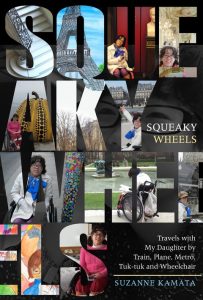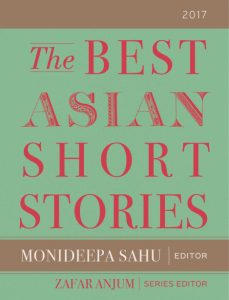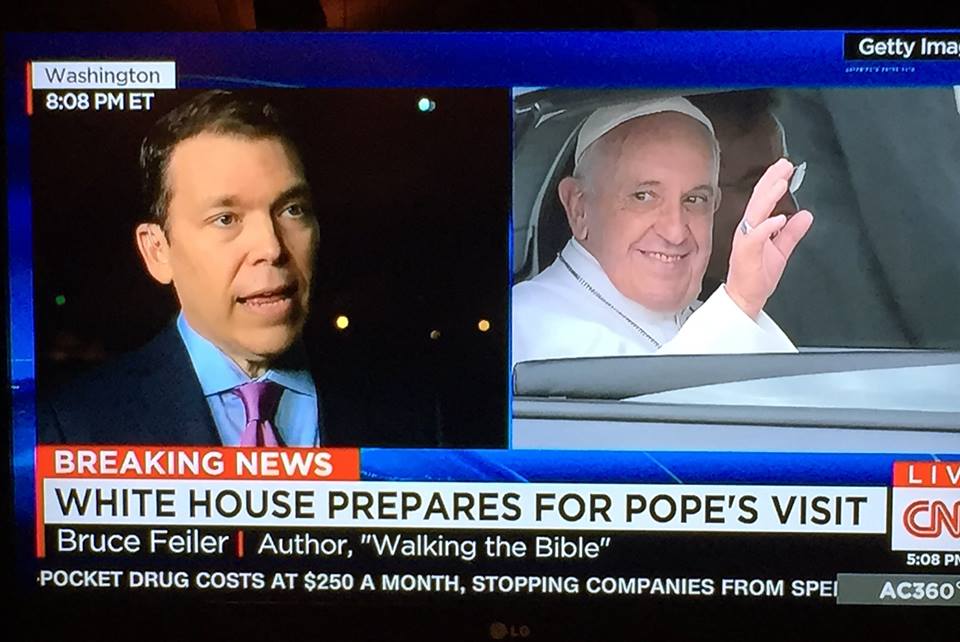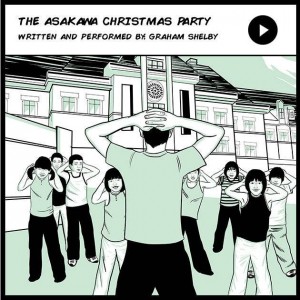Warren Decker and Michael Frazier to lead poetry workshops at Japan Writers Conference
Posted by Tom Baker
Warren Decker and Michael Frazier are two JET poets living in Japan who will each be hosting a workshop at the Oct. 10-11 Japan Writers Conference. This year’s conference is being held online, so you don’t need to be in Japan to attend. For details, see http://japanwritersconference.org. Official descriptions of the workshops appear below.
Warren Decker
Pterodactylic Pentagrameter: Working with Rhyme and Meter
Craft Workshop
Poetry
In this workshop we will focus on poetry that incorporates rhyme and meter. As a participant, please bring 2-10 lines of rhymed and metered poetry for us to discuss. Please also be ready to share your unique techniques for finding the right meter and rhymes for your poetic lines.
Paradoxically, the confines of rhyme and meter can often serve to open unexpected creative doors. One who sets out to write about “fractals” may find “pterodactyls” swooping into their poem. Maintaining a regular pattern of stressed and unstressed beats might lead a poet—after many hours at the keyboard—feeling as though a supernatural rhythmic force is guiding them to choose the perfect words and in the perfect order.
In this workshop, while looking at specific examples of rhyme and meter as exhibited in the participants’ samples, we will collectively attempt to recall the wonderful technical terminology describing syllabic meter (for example: “iambic pentameter,” and “dactylic tetrameter”), but also consider looser and more intuitive accentual poetic rhythms.
Furthermore, we will discuss the incredible variation contained within the seemingly simple concept of “rhyme,” focusing on concrete examples to understand how and why certain rhymes work.
Warren Decker has published poetry, fiction and non-fiction in The Best American Poetry 2018, NOON, The Font, Frogpond, Modern Haiku, Acorn, The New Ohio Review, THINK, Sou’wester, Fifth Wednesday, and several other online and print journals. He also performs his poetry online and in front of live audiences in Osaka.

Michael Frazier
I AM MY FAMILY (a persona workshop)
Craft Workshop
Poetry
This is a poetry workshop (open to writers of all genres) who are interested in writing about and through their family. We will use the persona form—writing in the voice of family members—to interrogate ourselves. Some poets we’ll look at include Natalie Diaz, Paul Tran, and Julian Randall.
No one can move forward without looking back at where they’ve come from. This is the principle that guides this workshop. Persona poetry is poetry in the voice of someone, or thing, other than ourselves: shiba inu, wild iris, Sailor Moon, Kanye West, or even your bed. We will use the persona to focus on and interrogate our own families and make meaning out of the relationships that have formed us. In order to embody the voices of our family (biological or chosen) we must practice radical empathy. While a persona is in the voice of someone else, my hope is that in the poems we will write, we will turn inwards and learn something new about ourselves. We will look at writers who wield the persona and voices of their family with urgency like Paul Tran, Yalie Kamara, Hiwot Adilow, K-Ming Chang, Natalie Diaz, and Eduardo C. Corral.
Michael Frazier is a poet in Kanazawa. He graduated from NYU, where he was the 2017 poet commencement speaker & co-champion of CUPSI. He’s performed at venues including Nuyorican Poets Café & Lincoln Center. On staff at The Adroit Journal, his poems appear in COUNTERCLOCK, Construction, Visible Poetry Project, among others.
JET alum Charles Kowalski to cohost Japan Writers Conference
Posted by Tom Baker
The annual Japan Writers Conference is seeking writers, editors and translators to give presentations at this year’s event, to be held in October in Kanagawa Prefecture. Through the years, many JETs and JET alumni writers, including freelancers, have spoken at or attended this event. This year, former JET Charles Kowalski will be cohosting the conference at his university.
The organizers are aware that the coronavirus has added uncertainty to everyone’s plans this year, but they intend to go ahead with the event if it is safe to do so in the autumn. However, they are also contemplating online options, so it might become possible to attend remotely. Here’s the official announcement:
 Each year, English-language writers from many fields gather at the Japan Writers Conference to share ideas and experiences on the art, craft and business of writing. In 2020, the 14th annual Japan Writer’s conference will be held on Oct. 10-11 at the Shonan campus of Tokai University in Hiratsuka, Kanagawa Prefecture. Award-winning novelist and JET alum Charles Kowalski, a popular speaker at past conferences, will cohost this year’s event with food and travel writer Joan Bailey.
Each year, English-language writers from many fields gather at the Japan Writers Conference to share ideas and experiences on the art, craft and business of writing. In 2020, the 14th annual Japan Writer’s conference will be held on Oct. 10-11 at the Shonan campus of Tokai University in Hiratsuka, Kanagawa Prefecture. Award-winning novelist and JET alum Charles Kowalski, a popular speaker at past conferences, will cohost this year’s event with food and travel writer Joan Bailey.
“The Japan Writers Conference is something special,” said poet John Gribble, a co-organizer of the event. “It is open to all, beginner to pro. It is also an annual collection of rigorous, authoritative lectures, workshops, and discussion groups. Anyone with a concern for the written and published word would benefit from coming.”
The conference is now accepting proposals for presentations. All published writers, as well as translators, editors, agents and publishers, are welcome to submit proposals.
Last year’s JWC presenters included astrophysicst Elizabeth Tasker on writing about science, novelist Evan Fallenberg on writing about sex, and screenwriter Steven Wolfson on structuring plots. Authors Holly Thompson and Mariko Nagai held a workshop on revising young adult fiction.
“This has been a year of isolation for everyone,” Kowalski noted. “But for English-language writers in Japan, that’s familiar territory, and it’s often the most fertile soil for the seeds of inspiration to take root. I hope that, come autumn, we’ll all be able to poke our heads above ground again and share a rich harvest of ideas.”
Writers and others interested in giving presentations, or simply attending the 2020 conference, can find details, including proposal guidelines and a submission form, at http://www.japanwritersconference.org. The deadline for proposals is June 1.
Run entirely by volunteers, the Japan Writers Conference is a free event open to all. Inquiries should be sent to japanwritersconference@gmail.com
Novelist Charles Kowalski to lead Japan Writers Conference workshop
Posted by Tom Baker
 Novelist and former Aomori Prefecture JET Charles Kowalski, the author of the thrillers “Mind Virus” and “The Devil’s Son,” as well as the new middle-grade novel, “Simon Grey and the March of a Hundred Ghosts,” will present a workshop on giving names to fictional characters at this year’s Japan Writers Conference, happening in Tokyo on Oct. 12-13. Here’s a description of his presentation:
Novelist and former Aomori Prefecture JET Charles Kowalski, the author of the thrillers “Mind Virus” and “The Devil’s Son,” as well as the new middle-grade novel, “Simon Grey and the March of a Hundred Ghosts,” will present a workshop on giving names to fictional characters at this year’s Japan Writers Conference, happening in Tokyo on Oct. 12-13. Here’s a description of his presentation:
What’s In A Name? Tips and traps in character naming
Craft workshop
Remember the journey into Mordor by the heroic Bingo Baggins? (Of course not, and aren’t you glad?) The naming of characters is a difficult matter, but we will discuss the three main considerations (sound, meaning, and associations) and their applications to genres ranging from contemporary fiction to SF and fantasy, along with pitfalls to avoid.
Charles Kowalski’s debut thriller, MIND VIRUS, won the Rocky Mountain Fiction Writers’ Colorado Gold Award, and was a finalist for the Killer Nashville Claymore Award and the Adventure Writers’ Grandmaster Award. His first middle-grade novel, SIMON GREY AND THE MARCH OF A HUNDRED GHOSTS, was just released by Excalibur Books.
For more information, visit charleskowalski.com or japanwritersconference.org.
3 current JETs to speak at Japan Writers Conference
Posted by Tom Baker
A trio of current JETs – Micah Tasaka, Yoshika Wason, and Michael Frazier – will be among nearly 50 published writers making presentations at this year’s Japan Writers Conference (Oct. 12-13 in Tokyo). Here’s the official description of what they’ll do:
Beyond Borders: Creating Connective Writing Communities
Reading, Panel, and Q&A
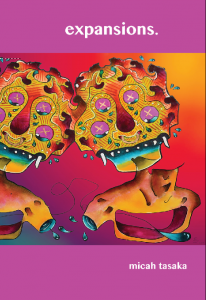 In this presentation, we will discuss how to build international writing communities, utilize internet resources, and create publishing opportunities for one another. Ultimately, we want to explore the connective power of writing communities in our home countries and abroad while focusing on creating mutual support and legitimacy for other writers.
In this presentation, we will discuss how to build international writing communities, utilize internet resources, and create publishing opportunities for one another. Ultimately, we want to explore the connective power of writing communities in our home countries and abroad while focusing on creating mutual support and legitimacy for other writers.
While publishing is often thought of as written work being “accepted” by a publisher, we would like to question what publishing means and focus on how to build international communities that support and create opportunities for one another. Through this discussion, we seek to dismantle the scarcity complex that often surrounds publishing and find new ways to get our work in front of audiences by means of collaboration and community support while utilizing internet resources to extend our reach to a global scale. With backgrounds in both written and performance art, we would like to redefine publishing to be more inclusive and community based. By establishing communities that are willing to hear and experience one another’s work, can we create space for more writers to be legitimized? In doing so, how can we ensure that those who exist in the margins are also heard from and not just established writers?
Micah Tasaka is a queer mixed Japanese poet and spoken word artist from the Inland Empire, California, residing in Fukui prefecture, Japan. They received their undergraduate degree in creative writing from the University of California, Riverside. Micah is a community organizer and has taught workshops on publishing manuscripts, poetry performance skills, and using poetry as healing for trauma survivors. Their first full length manuscript, Expansions, was released on Jamii Publishing in 2017, and their work has appeared in In the Words of Women, Name and None, and Nikkei Uncovered among others.
www.micahtasaka.com
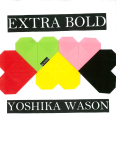 Yoshika Wason is a teacher and writer. She earned her BA from Boston College, where she was Editor in Chief of ASIAM, an Asian Pacific Islander American literary magazine. She is continuing her work in the API community through her current role as Co President of the Asian Pacific Islander Association for Japan Exchange and Teaching (API AJET.) Yoshika is working on her first full length poetry manuscript currently titled Second Chances for Fallen Blessed Children and also has a self published micro chapbook called Extra Bold. She currently writes a monthly education column
Yoshika Wason is a teacher and writer. She earned her BA from Boston College, where she was Editor in Chief of ASIAM, an Asian Pacific Islander American literary magazine. She is continuing her work in the API community through her current role as Co President of the Asian Pacific Islander Association for Japan Exchange and Teaching (API AJET.) Yoshika is working on her first full length poetry manuscript currently titled Second Chances for Fallen Blessed Children and also has a self published micro chapbook called Extra Bold. She currently writes a monthly education column
called Today’s Lesson and has been published in Ghost City Review, Rice Paper Magazine, The Paper Napkin, and elsewhere. Learn more at
www.yoshikawason.com
Michael Frazier graduated from NYU, where he was the 2017 Poet Commencement Speaker & College Union Poetry Slam Invitational Co-Champion. He has performed at venues such as Lincoln Center for the Performing Arts, Nuyorican Poets Cafe, & Gallatin Arts Festival. His poems appear in The Visual Poetry Project, Day One, The Speakeasy Project, & others. Catch him reading poems for The Adroit Journal & teaching SHS in Kanazawa.
For more information about this year’s Japan Writers Conference, visit www.japanwritersconference.org.
Suzanne Kamata to speak at Japan Writers Conference
Posted by Tom Baker.
JET alum Suzanne Kamata will be among nearly 50 published writers making presentations at this year’s Japan Writers Conference (Oct. 12-13 in Tokyo). Here’s the official description of her talk:
“Wheelchair User or Wheelchair-bound?: Representations of Persons with Disabilities in Children’s Books”
In this session, I will discuss positive and problematic representations of persons with using examples from recently published Japanese textbooks, and literature featuring children in Japan and other countries, including my own work, with a view to developing better awareness. With the approach of the 2020 Tokyo Paralympics, people with disabilities in Japan have been given more attention than perhaps ever before. English textbooks for Japanese children now frequently include stories about or representations of people with disabilities. Worldwide, initiatives such as #weneeddiversebooks and the call for #ownvoices have led to an increase of children’s and young adult books featuring characters with disabilities. That said, some of these representations, and the way that they are discussed remain problematic. When do stories about disability become “inspiration porn”? What kind of language should we use when discussing disability? Who has the right to tell these stories?
Suzanne Kamata is the award-winning author or editor of twelve published books including “Love You to Pieces: Creative Writers on Raising a Child with Special Needs” (Beacon Press, 2008), “Gadget Girl: The Art of Being Invisible” (GemmaMedia, 2013), “A Girls’ Guide to the Islands” (Gemma Open Door, 2017), “Squeaky Wheels: Travels with My Daughter by Train, Plane, Metro, Tuk-tuk and Wheelchair” (Wyatt-Mackenzie Publishing, 2019), and “Indigo Girl” (GemmaMedia, 2019). She is an Associate Professor at Naruto University of Education.
For more details, visit http://www.japanwritersconference.org/
Todd Jay Leonard to speak at Japan Writers Conference
Posted by Tom Baker.
JET alum Todd Jay Leonard will be among nearly 50 published writers making presentations at this year’s Japan Writers Conference (Oct. 12-13 in Tokyo). Here’s the official description of his talk:
“Publishing in the EFL Market in Japan: Four Perspectives on How to Make your Proposal Count”
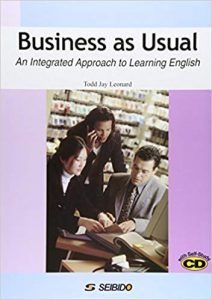 Short lecture with Q & A
Short lecture with Q & A
This presentation will outline the current publishing market in Japan for EFL/ESL textbooks by reviewing the various points of views of the publishing industry. The presenter has published extensively within the ESL/EFL field in Japan and will offer helpful advice to budding authors who wish to pursue projects geared to Japan’s domestic market. What are publishers looking for in the current market? What appeals to editors who ultimately decide? What are the salespeople on the front lines hearing from their market? What must an author do in order to get his/her book published? This presentation focuses on these very questions.
Todd Jay Leonard has been actively involved in book publishing for thirty years and has published twenty books. He lives, writes, and teaches on the southern island of Kyushu, where he is a university professor at University of Teacher Education Fukuoka. He has published extensively in academic journals, magazines, and newspapers on cross-cultural, historical, and Teaching English as a Foreign Language (TEFL) themes.
For more details, visit http://www.japanwritersconference.org/
2019 Japan Writers Conference wants you!
Posted by Tom Baker
The 13th annual Japan Writer’s Conference will be held on the weekend of Oct. 12-13 at Meiji Gakuin University in Tokyo. The organizers are now seeking writers to give presentations. If you would like to participate, contact details appear at the bottom of this post.
Each year, the Japan Writers Conference attracts English-language writers in a variety of genres and fields to share ideas on the art, craft and business of writing. And each year, a significant number of past and present JETs take part.
At last year’s conference, for example, Holly Thompson spoke about the picture-book market, Suzanne Kamata introduced “The Best Asian Short Stories” anthology, and Tom Baker gave a nuts-and-bolts talk on book reviewing. JET presenters in previous years have included journalist Elaine Lies, textbook author Todd Jay Leonard, travel writer Victoria Vlisides, and novelists Benjamin Martin and Percival Constantine.
Run entirely by volunteers, the Japan Writers Conference is a free event open to all. Details on this year’s event can be found at japanwritersconference.org.
 Writers interested in making a presentation at the 2019 conference should first read the “Call for Proposals” and then contact co-coordinators John Gribble at gribblej@gol.com and Karen McGee at karenandcheyenne@hotmail.com. The deadline for presentation proposals is June 1.
Writers interested in making a presentation at the 2019 conference should first read the “Call for Proposals” and then contact co-coordinators John Gribble at gribblej@gol.com and Karen McGee at karenandcheyenne@hotmail.com. The deadline for presentation proposals is June 1.
Suzanne Kamata to reveal “The Truth about Writing Contests”
Posted by Tom Baker
The Japan Writers Conference, a free annual event that invariably attracts at least a few JETs, will be held at Otaru University of Commerce on Oct. 13 and 14. One of the JETs giving presentations this year will be Suzanne Kamata, who will be giving two of the 36 presentations scheduled for the big weekend. One of them was described in a previous JETwit post. Here’s the official description of the other:
“The Truth about Writing Contests”
Short lecture with Q & A
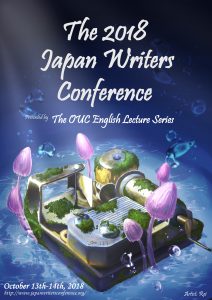 I will describe various kinds of writing contests, the pros and cons of entering said contests, and give advice on how to improve an entrant’s chances of winning.
I will describe various kinds of writing contests, the pros and cons of entering said contests, and give advice on how to improve an entrant’s chances of winning.
There are many contests for writers. Some may think that it’s not worth the time or the cost of the entrance fees. After all, many contests get hundreds of submissions, and judging is often somewhat subjective – every reader has different likes and dislikes. However, thanks to winning or placing in writing competitions, I have received plane tickets to Paris, Sydney, and Columbia, South Carolina (from my home in Japan). I’ve also been awarded cash, medals, trophies, and plaques and shiny prize stickers for my books, not to mention bragging rights and prestige. A contest win can also be an excuse for a burst of publicity. Contests may lead to recognition, getting an agent or publisher, and book sales. So how do you decide which contests to enter? How do you win? In this session I will share my expertise as a frequent contest entrant, sometime winner, and occasional judge.
Suzanne Kamata has won many awards for her writing including a grant from SCBWI for her forthcoming novel tentatively titled Indigo Girl (GemmaMedia 2018), a grant from the Sustainable Arts Foundation for her as-yet-unpublished mother/daughter travel memoir Squeaky Wheels, the Paris Book Festival Grand Prize for Gadget Girl: The Art of Being Invisible (GemmaMedia 2013), and an IPPY Silver Medal for her most recently published novel The Mermaids of Lake Michigan (Wyatt-Mackenzie Publishing 2017).
Holly Thompson to speak about picture books at Japan Writers Conference
Posted by Tom Baker
The Japan Writers Conference, a free annual event that invariably attracts at least a few JETs, will be held at Otaru University of Commerce on Oct. 13 and 14. One of the JETs giving presentations this year will be poet and novelist Holly Thompson, who first came to Japan in connection with the pre-JET MEF program. She will present “Half the Story: Writing for the Picture Book Market.” Here’s the official description of her presentation:
Short Lecture, Exercises and Q&A
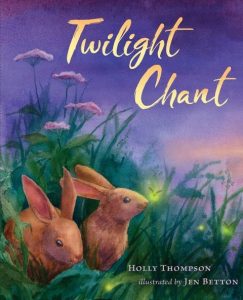 Picture book writing is a particular art. Writers of picture book manuscripts must write for page turns and create opportunities for the illustrator—writing just enough to offer possibilities. This session introduces the craft of writing picture books for current English-language picture book markets.
Picture book writing is a particular art. Writers of picture book manuscripts must write for page turns and create opportunities for the illustrator—writing just enough to offer possibilities. This session introduces the craft of writing picture books for current English-language picture book markets.
Writing is only half the story in picture books–images and text interact to tell the story together. So how do we write text without saying too much? Where in our writing should we step aside for the illustrator? And how do we compress stories for the strict count of 32 pages? How can we skill up to craft manuscripts that appeal to editors and art directors for their illustration possibility? This session will explore the anatomy of the picture book as it pertains to writers and offer guidelines for crafting fresh, marketable picture book manuscripts. We’ll examine sample picture books—fiction, nonfiction, poetry—and try some interactive exercises. We will address the current English-language picture book markets and share the gaps, openings and opportunities for writers to get a foot in the door.
Holly Thompson is author of the picture books Twilight Chant; One Wave at a Time, The Wakame Gatherers: verse novels Falling into the Dragon’s Mouth, Orchards, The Language Inside; and the novel Ash. She writes poetry, fiction and nonfiction, is SCBWI Japan Regional Advisor, and teaches at Yokohama City University.
Suzanne Kamata to introduce “Best Asian Short Stories” at Japan Writers Conference
Posted by Tom Baker
The Japan Writers Conference, a free annual event that invariably attracts at least a few JETs, will be held at Otaru University of Commerce on Oct. 13 and 14. One of the JETs giving presentations this year will be Suzanne Kamata, whose story “Monchan” appears in the “The Best Asian Short Stories 2017” anthology. Suzanne will be giving two presentations. Here’s the official description of one of them:
Kitaab Publisher Zafar Anjum and contributor Suzanne Kamata will discuss The Best Asian Short Stories 2017 anthology. Anjum will also talk about other anthologies in the works and publishing opportunities for Japan-based writers and translators in Singapore.
Zafar Anjum, who heads the independent Singapore publishing house Kitaab International, and contributor Suzanne Kamata, will introduce The Best Asian Short Stories 2017 anthology. In addition to the anthology series, Kitaab has published novels, short story collections and stories for children. Anjum will also discuss his vision for Kitaab and publishing opportunities for Japan-based writers and translators. There will be a question and answer period.
Zafar Anjum is a writer, publisher, and filmmaker who lives and works in Singapore. His books include Kafka in Ayodhya and Other Short Stories (Kitaab International, 2015), Iqbal: The Life of a Poet Philosopher and Politician (Random House India, 2014), and The Singapore Decalogue (Red Wheelbarrow, 2012). He is the founder-editor of Kitaab, an online journal and publishing company that promotes Asian writing in English.
Suzanne Kamata is the author or editor of ten published books including, most recently Screaming Divas (Simon Pulse, 2014), The Mermaids of Lake Michigan (Wyatt-Mackenzie Publishing, 2017) and A Girls’ Guide to the Islands (Gemma Open Door, 2017). Her story “Mon-chan” was selected for inclusion in The Best Asian Short Stories 2017 anthology. She is an Associate Professor at Naruto College of Education.
JQ Magazine: Book Review — ‘A Girls’ Guide to the Islands’
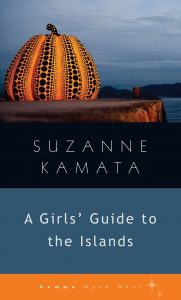
“While the book is largely a ‘what we did from beginning to end’ odyssey, Kamata’s vivid accounts of her journey with her daughter put you alongside them as they soak up culture.” (Gemma Open Door)
By Rashaad Jorden (Yamagata–ken, 2008-10) for JQ magazine. A former head of the JETAA Philadelphia Sub–Chapter, Rashaad is a graduate of Leeds Beckett University with a master’s degree in responsible tourism management. For more on his life abroad and enthusiasm for taiko drumming, visit his blog at www.gettingpounded.wordpress.com.
Exploring local wonders with loved ones can conjure up magical memories—and an enormous sense of satisfaction upon overcoming numerous obstacles.
JET alumna Suzanne Kamata (Tokushima-ken, 1988-90) lived through such experiences, which are recounted in her nonfiction debut, A Girls’ Guide to the Islands. Such a title would indicate a guidebook for female travelers. But a scan of its second paragraph reveals the book is a first person travelogue of the author and her daughter Lilia’s exploration of their corner of Japan. Despite spending most of her life in the countryside, Kamata (author of Gadget Girl and The Beautiful One Has Come) has not just visited some nearby landmarks; she figures playing tourist in several locations would serve as good mother-daughter bonding experiences.
This treats the reader to a journey of art exploration. Lilia loves art and she wants to make a career out of it. Kamata also shares an affinity for art, which makes them perfect travel partners. A Girls’ Guide to the Islands is enhanced by the author’s illumination of the art she sees—such as Yayoi Kusama’s My Eternal Soul, which is painted in vivid colors that are considered unsettling in Japan (the artist’s iconic pumpkin sculpture in the island town of Naoshima also graces the book’s cover)—as well as the works that enthrall her daughter. Fortunately for them (and possibly surprising to some), foreign art from renowned artists was easy to locate in the rural museums they visited. Kamata and Lilia find one of Monet’s most famous paintings and Andy Warhol’s Flowers in Naoshima, as well as other works from other non-Japanese artists.
2016 Japan Writers Conference in Tokushima
Posted by Tom Baker (Chiba, 1989-91).
The Japan Writers Conference is a free annual event for English-language writers, held in a different part of Japan each year. In 2016, it will take place on the weekend of Oct. 29-30 at Tokushima University in Shikoku. A good number of current and former JETs always take part, and one of them is this year’s conference host: Tokushima University Lecturer Suzanne Kamata.
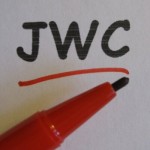 Suzanne has written several novels and compiled several anthologies and is an editor for www.literarymama.com. She and three other published authors will participate in a panel called “Inspiring Fiction: Where do You Get Your Ideas?”
Suzanne has written several novels and compiled several anthologies and is an editor for www.literarymama.com. She and three other published authors will participate in a panel called “Inspiring Fiction: Where do You Get Your Ideas?”
That panel is just one of about 30 presentations scheduled. JET alum and textbook author Todd Jay Leonard will give a lecture titled “Helpful Hints on How to Get Published in the EFL Market in Japan.” JET alum Elaine Lies, a Reuters journalist, will present “Food, Glorious Food,” a workshop on how to write evocatively about the emotional, sensory and nostalgic power of food. Current JET Victoria Vlisides, who writes for JapanTravel.com, will give a presentation called “Bust into the Japan Writing Scene.”
Poet and novelist Holly Thompson, who first came to Japan in connection with the pre-JET MEF program, will give two presentations. One is “Poems with Plot—A Narrative Poetry Workshop.” The other, with novelist Mariko Nagai, is a joint lecture on “Verse Novels Crossing Borders.”
For details on those and about two dozen other presentations, visit www.japanwritersconference.org or follow @JapanWritersCon on Twitter.
JET alum Bruce Feiler a CNN commentator during Pope’s visit
***************
Bruce Feiler (Tochigi-ken, 1989-90), author of Learning to Bow as well as several books on religion including Walking the Bible, Abraham and Where God Was Born along with other popular books including The Council of Dads, and, most recently, The Secrets of Happy Family, can now add CNN commentator to his resume. He has been providing religion-related perspectives in live conversations with Anderson Cooper, Wolf Blitzer and others.
****************************
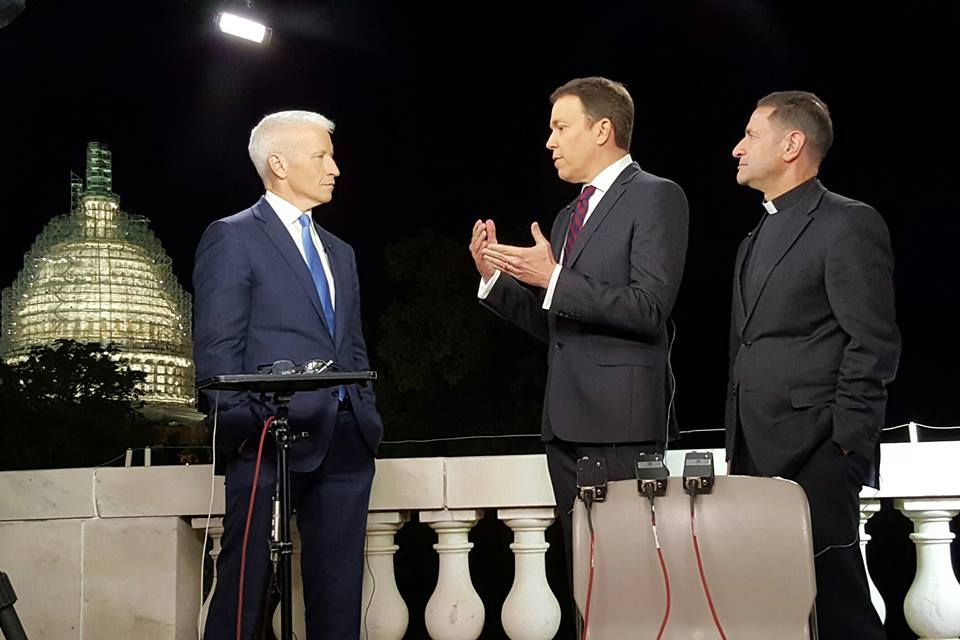
To read prior JETwit posts about Bruce Feiler, please click here.
For more regular updates, follow Bruce on Facebook: www.facebook.com/brucefeilerauthor.
And Twitter: www.twitter.com/brucefeiler.
Writer Graham Shelby (Fukushima 1994-97) recently teamed up with The Butcher’s Apron Radio Show to produce this full-on audio story (music, sound EFX, the whole thing) about a distinctly JET experience.
“The Asakawa Christmas Party” tells the true story of a complicated Christmas party Graham and a few other American JETs attended at a Japanese elementary school. It was complicated because…
a.) it took place on the anniversary of the Pearl Harbor attack.
and…
b.) the teachers asked them to teach “a traditional American Christmas dance.” (FYI – there aren’t any).
How’d it turn out? Doozo.
The story was produced as part of Selfridge and Co’s Reasons to Believe series of original Christmas tales. Graham has a few more Japan stories here.
JET alum publishes book on getting unstuck: “Dream in Color, Think in Black & White”
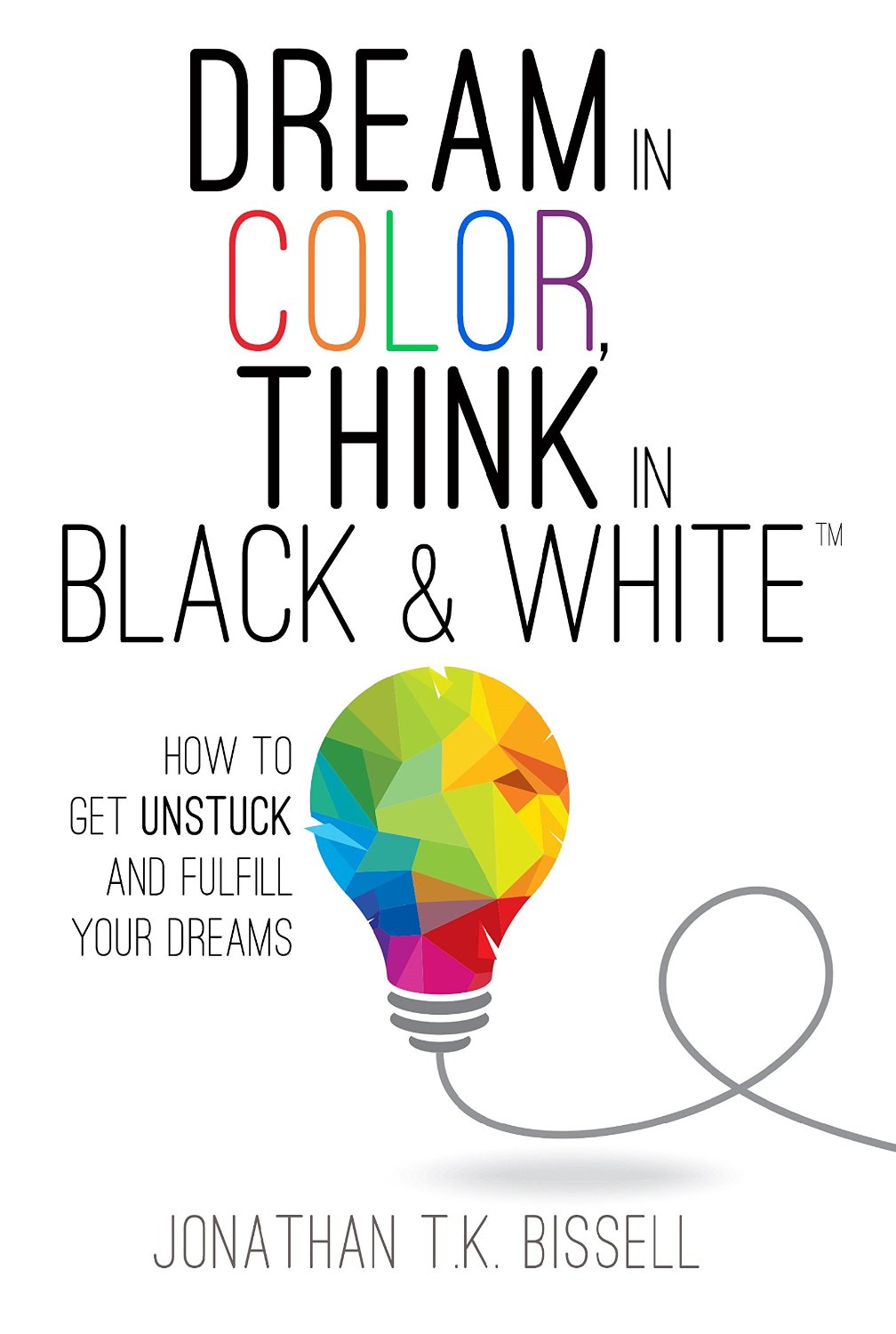 Jonathan Bissell (Chiba-ken, 1995-2000) has written a “how-to” guide to getting unstuck and pursuing your life or career dreams. A timely topic as many JETAA chapters are hosting career forums over the next few weeks. His book, entitled “Dream in Color, Think in Black & White: How to Get Unstuck and Fulfill Your Dreams” is now available on Amazon in both Kindle and paperback. For complete details visit amazon.com/author/jonathanbissell.
Jonathan Bissell (Chiba-ken, 1995-2000) has written a “how-to” guide to getting unstuck and pursuing your life or career dreams. A timely topic as many JETAA chapters are hosting career forums over the next few weeks. His book, entitled “Dream in Color, Think in Black & White: How to Get Unstuck and Fulfill Your Dreams” is now available on Amazon in both Kindle and paperback. For complete details visit amazon.com/author/jonathanbissell.
Description:
The world is filled with dreamers, but it’s owned by people who do. Yet too many dreamers are stuck, unhappy and unfulfilled in their life or career. They don’t know how to move forward or what to do next. Dream in Color, Think in Black & White is a focused and powerful book that provides practical and encouraging step-by-step guidance for dreamers everywhere who want to get unstuck and fulfill their dreams, but don’t know how.
Introduction:
Admit it. You’re stuck. Somewhere along the way, you had a dream that you let go of. But it hasn’t let go of you. You’re the reason this book was written. Because dreams matter. Dreams are powerful. And sometimes dreams just won’t go away – no matter how impractical, ill-timed or financially risky they are.
This is a book about getting unstuck in your life or career. It’s about learning to Dream in Color and Think in Black & White. There are three parts to this book: Dreaming in Color, Thinking in Black & White, and Fulfilling Your Dreams. Each part contains practical “how to” steps and examples explaining how to get unstuck and move toward your dream. The rest is up to you. Let’s get started.
Early Responses to Dream in Color, Think in Black & White:
“a superb must-read…a roadmap of balance and success”
Chaya Abelsky, Master Certified Coach, Principal at Triumphant Journeys LLC and Director of the NonProfit HelpDesk.
“powerfully written…compels you into creating a plan”
Jane A Creswell, Master Certified Coach, founder of IBM Coaches’ Network, CEO of iNTERNAL iMPACT, LLC, and the author of two books.
“a how-to guide for anyone seeking career and personal fulfillment”
Luther Jackson, Board Member, American Leadership Forum – Silicon Valley.

